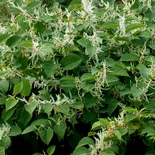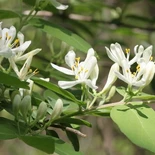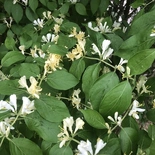To further Wild Ones’ mission to connect people with native plants, we are excited to continue this monthly blog focused on native plants in the national news. This regular feature aims to educate, engage, and inspire action by highlighting conservation efforts and scientific findings related to native flora.
California Bumble Bee Communities at Risk
Recent research out of the UC Davis Department of Entomology and Nematology shows substantial shifts in bumble bee communities due to climate change. The authors compared a long term species occurrence data from the Bumble Bees of North America database with the Community Temperature Index (CTI), a tool to study how groups of species in an area respond to changes in temperature over time. CTI measures the balance of warm- and cool-adapted species within communities and calculates an average based on temperature preference. Over the past 30 years, CTI for the 59 bumble bee species examined increased by 0.99°C, driven by rising summer temperatures. This shift reflects a decline in cold-adapted species and an increase in warm-adapted species, particularly in mid- to high-latitude and elevation areas. These findings highlight widespread effects of climate change on bumble bees and other insect communities. The authors emphasized that to help protect vulnerable species, “we need to find ways to support species locally though climate refugia—that includes include heat- and drought-tolerant pollen and nectar sources, and structural heterogeneity to provide microclimate respites during heat waves.”
Minnesota: Land of 8,000 Blue Thumbs
A network of clean water and native plant stewards are coming together under the Blue Thumb program to offer resources, workshops, and coaching to Minnesota residents. This includes grants through the Minnesota Board of Water, Soil, and Resources’ Lawns to Legumes program given to qualifying residents.
From 2019-2023, over 8,000 participants have participated in workshops and presentations regarding planting for pollinators. This program and its participants have created 32 acres of native plantings, installed 1,260 projects, and planted 1,958 trees and shrubs.
Any Minnesota resident can apply for native planting project grants and are chosen in the spring and fall. The deadline for the Spring 2025 grants is November 30, 2024.
State offers residents grants for native plants, trees -mlstargazette.com
More Ways Invasive Species Impact Ecosystems and Plant Communities
A study recently published in the Proceedings of the National Academy of Sciences documented how invasive species impact plant community’s water, nutrient, and carbon cycles and other functional traits.
More than 75,000 vegetation monitoring plots from across the United States were analyzed and the authors found that plant communities with more invasive species have leaf and root traits that support fast resource acquisition and short leaf and root lifespans. These communities were also characterized by shorter and more shallow, thin, and fine roots. This led researchers to believe plants in invaded communities relied less on fungal partnerships for resources compared to plants without invasive competitors. These findings were similar across different ecosystems such as grasslands, deserts, and forests.
These findings show that invasive species have a significant impact on necessary ecosystem functions such as water and nutrient cycling, carbon storage, and litter decomposition. Anticipating the impacts and costs of invasive species to climb in the future, author and professor at New Mexico State University Magda Garbowski says these findings will help guide the invasive species management and mitigation decisions made by policy-makers, land managers, and ecologists.
NMSU researcher leads national study on invasive plant species – NMSU Newsroom
New York: Home-Grown Natives
Wild Woods Restoration Project (WWRP) has a different approach to rebuilding native plant communities. The more than 200 volunteers are trained to collect seeds from local populations and then many of the volunteers take those plants home to care for them until they are ready to plant. Founder and president Linda Rohleder says this deepens the connection the volunteers have with the effort as they get attached to the plants and want the project to succeed.
Since 2022, volunteers have grown more than 30,000 plants from seed collected in Hudson Valley and northern New Jersey. Volunteers then plant those seedlings into preserves and parks. WWRP’s focus is mostly growing species that make up the forest understory such as the white wood aster (Eurybia divaricata) and mapleleaf viburnum (Viburnum acerifolium). These species and others have been heavily browsed by deer which has helped invasive species get a foothold and crowd out the remaining native species; two threats faced by most eastern national parks.
WWRP collects seeds only from local plant populations to preserve genetic diversity and give the plants the best chance to adapt to disease, pests, climate change, and other stressors they may face in the area. Seeds are harvested in small quantities from healthy populations to ensure enough remains for future seed generation. By collecting their own seed, the project also avoids the shortage of locally adapted seed supply crunch which has become a barrier for other ecological restoration projects.
This Hudson Valley group puts a homegrown spin on restoring native forests -Audubon
“Knot” a Nice Plant for Connecticut
Japanese knotweed (Fallopia japonica), brought into the U.S. from Japan in the 1800s, is an invasive non-native plant that forms dense thickets that crowd out native species. Its extensive root system also intensifies erosion and increases flood risks. The species can grow up to 15 feet tall with ⅔ of the plant underground. It prefers disturbed soil found along roadways and water and has the ability to come up through pavement, threatening foundations and roads.

Japanese Knotweed(Polygonum cuspidatum)
This plant spreads rapidly during warmer seasons and root and stem fragments spread the plant further. Removal is a costly process: it can take 3-5 years to eradicate using herbicides and its presence reduces property values due to the aforementioned ability of its stems to penetrate concrete putting foundations and basements at risk.
Experts recommend hiring a landscaper to remove Japanese knotweed so pieces are not left behind to propagate. The best way to eradicate this plant is cutting the plant to the ground in June then spraying the plant with herbicide in the fall for 3-5 years. Afterward, planting native vegetation in its place to make sure the site is under control is advised.
Japanese knotweed is threatening native plants in Connecticut -ctinsider.com
Missouri: Putting Land Restoration to the Test
Bush honeysuckle (Lonicera morrowii and L. maackii as well as L. x bella and L. tartarica) is found throughout Missouri and outcompetes native plants by stealing nutrients and obstructing sunlight. It can grow so thick that animals have a hard time foraging and has caused declines in bird biodiversity due to the berries that provide inadequate nutrition to birds. These species have a 7-13 year seed bank and are readily dispersed by birds.

Morrow's Honeysuckle(Lonicera morrowii)

Amur Honeysuckle(Lonicera maackii)

Showy Fly Honeysuckle(Lonicera ×bella)
The Heartland Conservation Alliance (HCA), with support from the Missouri Department of Conservation, manages Heartland Overlook Preserve: 40 acres of land with a honeysuckle problem that is adjacent to the Blue River. In order to improve the condition of the Blue River, HCA partnered with local organizations to restore the land at the preserve, remove the honeysuckle, and restore the banks with native plants to prevent erosion and restore biodiversity.
Two different techniques were tested to remove the honeysuckle and restore the land. First, the use of eco-grazers: herbivores that can be used in restoration due to their eating patterns. Good Oak brought in 25 sheep to graze on the honeysuckle. “It’s surprisingly high in protein, the foliage,” Jacob Canyon, Good Oak’s co-founder said. “And they (the sheep) like it really well, they eat it readily.” While they don’t eradicate the honeysuckle, the grazing opens the area up and provides easier access to treat the honeysuckle. Timing the eco-grazing with critical points of the plant’s life cycle also serves to disadvantage the plant and helps the native plants compete.
The second technique involved hand restoration. Collaborating with Native Lands Restoration Collaborative, plants were removed by hand-cutting every stem and planting native hedges and grasses immediately to anchor the soil and stabilize the river bank. Removed honeysuckle was burned. While this method is costly, Jessica Hartel, senior director of conservation and education at HCA, says it yields better results overall.
Given that surrounding woodlands are still filled with honeysuckle, these efforts will need to be ongoing, with regular monitoring and continued use of these approaches. Despite the challenges, these combined efforts are making a real impact, restoring balance to the ecosystem and providing a healthier future for native species.
Sheep, native plants and fire tested as methods for managing invasive honeysuckle next to the Blue River -flatlandkc.org
Illinois: Native Plant Bans No More!
While native landscaping is growing in popularity as more gardeners recognize their part in supporting wildlife and absorbing stormwater, many homeowner associations (HOAs) have been less excited about this trend. Across the county, some HOAs have prohibited native plants and enforced these rules with fines, tickets and other means arguing that native plants are too tall, messy, and attractive to rodents.
The Illinois state legislature has jumped into the fray and passed a new law to ban the HOA bans in the state: Illinois HOAs will no longer be able to ban homeowners from planting native gardens. “This law gives all folks an opportunity to be part of a collective movement,” said state Rep. Laura Faver Dias (D-Grayslake), who introduced the bill. “The reality of climate change can be debilitating, it’s hard to know where to even start. But now anyone can help restore native habitat right in our own yards.”
The Homeowners’ Native Landscaping Act includes wording such as “so long as the area is maintained predominantly free of weeds, invasive species, and trash” and “so long as the vegetation does not extend over or onto neighboring properties, public or common sidewalks,” among other provisions. While the law doesn’t prohibit HOA’s that adopt “reasonable” regulations, it does state that height restrictions are not one of those options. This is one of the most common ways that HOAs block the use of native plants.
“We don’t need unnecessary barriers,” said Chris Kessler, policy director at Openlands, who helped direct the bill through the state House and Senate. “The more that we can make the process more accessible to people, the better. We’re seeing biodiversity loss, the effects of climate change, all these things. People want to do something, and this empowers them.”
HOAs can’t ban native plants thanks to new law -WTTW
Restoring the Old-Growth Grasslands of the Eastern US
The National Park Service is beginning the initial phases of a large grassland restoration project to restore up to 4,000 acres in 37 parks from Mississippi to Vermont. This project is funded by the Bipartisan Infrastructure Law and the Inflation Reduction Act.
Some of these grasslands are thousands of years old and made up of original animal, plant and microorganism communities. Old growth grasslands host rare species, plants with specialized growing requirements, and plants that take years to establish. These ecosystems are biodiverse, with genetic diversity from the original grasslands of Eastern US, and conserving those genetics and local ecotypes is important in restoring these grasslands.
Many grasslands are now agricultural fields or are degraded and have lost much of their biodiversity. The management plans for these situations is to clear the area and plant with a diverse mix of local native seed. Old-growth remnant grasslands will be managed through removing invasive and non-native species and woody plants. In these sites, seed will be collected and spread within the remnant to enhance and maintain diversity. Disturbance, necessary for these grasslands, will be reintroduced with prescribed burns, mowing and invasive species treatments.
Hidden in plain sight: old growth remnant grasslands -U.S. National Park Service

